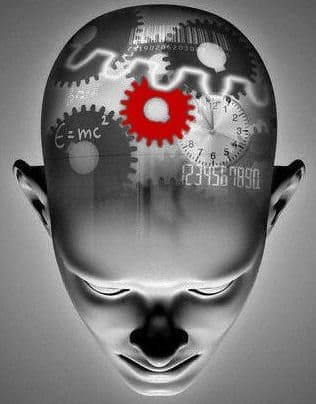
The same goes for your online marketing strategy. Psychology plays a part in every element of your marketing strategy, but it is not often given the consideration it requires to be successfully integrated. This blog post will take a look at conversion psychology and the elements your business can implement to optimize content.
Fitts’ Law
A scientific law created by Paul Fitts, Fitts’ Law predicts that the time required to move to a target area is a function of the ratio between the distance to the target and the width of the target. In marketing terms this means you can increase the CTR (click-through-rate) to a desired action by making the target large, and placing it near the expected mouse location. Inversely, you can decrease undesired actions (like your unsubscribe rates) by using a small target, at a distance from the mouse starting position.
Gather Allies
How loyal are you to your favorite brands/operating systems? Are you Apple or Windows? Android or iPhone? Chrome or Firefox? Think about the loyalty you show to these products, I know personally I’ve always used Android and have never even considered an iPhone. The idea of “joining a team” against a common enemy is a powerful motivator. It creates loyal, long-term customers who are easier to upsell in the future.
Law of Past Experience
The law of past experience states that a prospect’s previous experiences, whether it involved your business or not, will contribute to their current experience. Fab.com conducted an experiment with their “add to cart button.” They created 3 variations, with the simple (and common) variation “add to cart” winning with a 49% success rate, attributing to the idea that consumers are used to seeing the checkout button say “Add to Cart” and are confused when seeing otherwise. Not meeting customer expectations, even if you think you may have exceeded them, can hurt your CTR and conversion rates.
Inversely, think about a test conducted by Obama’s 2012 campaign. When a person thinks about unsubscribing from an email list, their brain automatically starts scanning for the link labeled “Unsubscribe.” By changing the link to “If you’d like to unsubscribe from these messages click here,” they were able to drop the unsubscribe rate by 22%.
Psychology of Happiness and Pain
There is a very long list of elements that play into making prospects feel happy, for example, images of smiling people, cute animals, bright colors, etc. Even more effective than the including things they want to see, is including things they want to avoid. The concept of psychology of pain states that “The magnitude of pleasure reaches its limit in the removal of all pain.” If you’re going to address the self-conscious feelings of your audience, make sure you offer a genuine and truly effective solution to their problems.
Cost-Benefit Analysis
Is what you are offering worth whatever the prospect is going to have to do to get it? It is important to decrease the mental friction preventing your customer from making a purchase, this could mean bigger CTA buttons, less opt-in form fields, pre-filling forms, etc. When creating offers, try to decide objectively what you would “pay” for the content, so you don’t drive prospects away by asking for too much. Once you have driven traffic to your site, make it simple for your visitors to take your intended action.
Being aware of, and implementing these psychological triggers throughout the different elements of your marketing strategy will optimize the way your audience interacts with your content. Run a few a A/B tests and see what works for your business. Understanding how and why your prospects feel the way they do when viewing the content on your landing page is essential for improving conversion rates and creating sustainable solutions for your customers in the future.
Image courtesy of digitalbob8 via Flickr.
